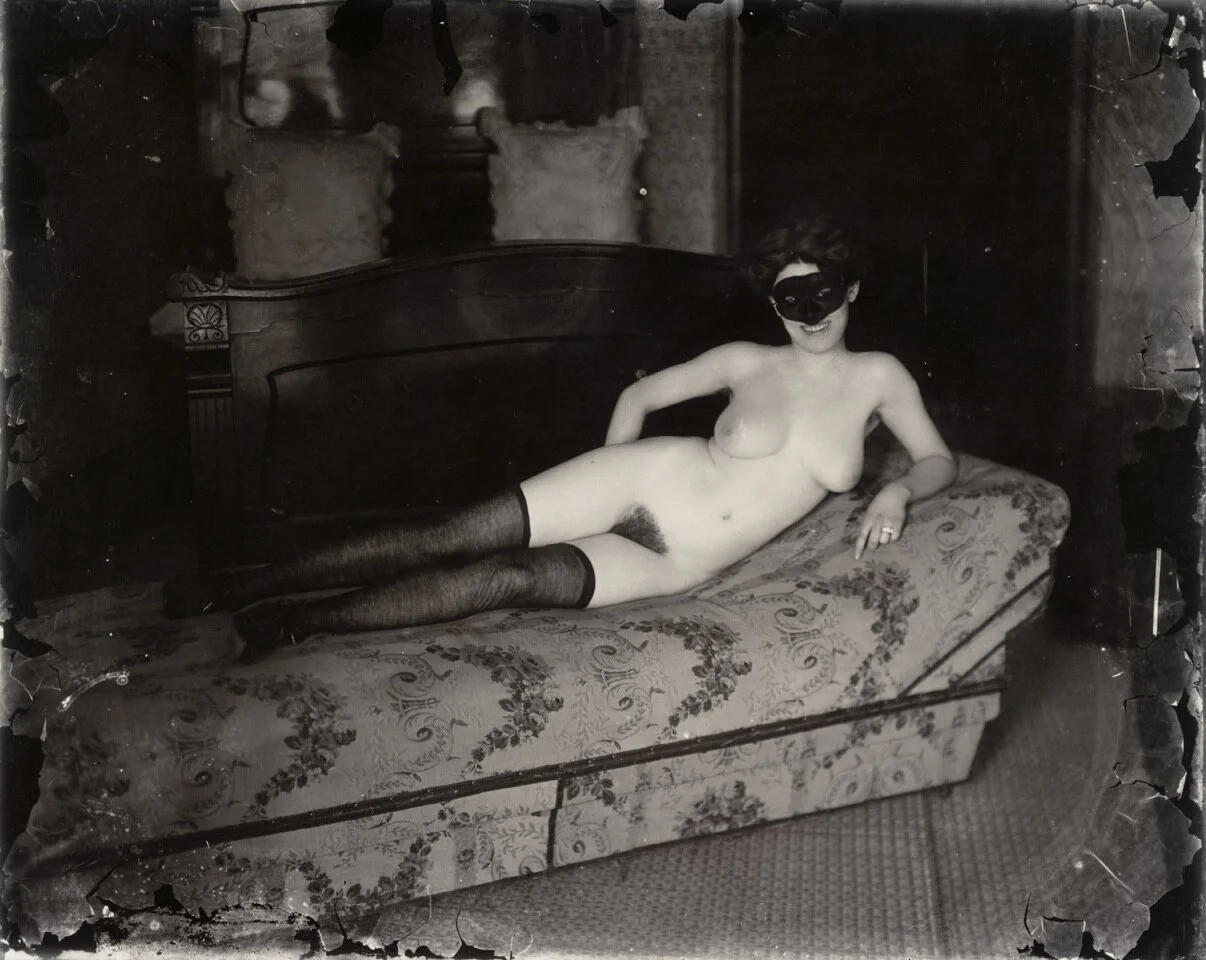Gallery Review: Deborah Bell Photographs
E.J. BELLOCQ (American, 1873-1949), Storyville Portrait, ca. 1912, printing-out paper print, gold-toned, printed later by Lee Friedlander, image/sheet: 8 x 10 inches (20.3 x 25.4 cm), initialed in pencil by Lee Friedlander and stamped in ink on verso
The Deborah Bell Photographs gallery is currently showing 36 of E.J. Bellocq’s glass plate negatives at their intimate space on 71st street. Up three flights of winding stairs is a remarkably quiet, apartment-sized gallery. On a marble fireplace, information on the photographs is stacked in neat piles. A large white table is surrounded by white walls, covered with delicately placed portraits of sex workers in New Orleans’ red light district.
Later named “Storyville”, these 16 blocks in New Orleans became an active scene for sex workers from 1897-1917. After Bellocq passed away, 89 of his negatives were discovered in his desk, continuing to be the only work of his that remains. Photographer Lee Friedlander made contact prints in 1966 on the same gold-toned paper that Bellocq used for his rare prints, and with that, came the Storyville Portraits. Friedlander describes his first encounter with the Bellocq plates in his preface for the book E.J. Bellocq: Storyville Portraits, writing “I met Larry Borenstein in 1958 while listening to Kid Thomas’ band in Larry’s art gallery on St. Peter’s Street near Bourbon...Among his treasures at that time were the Bellocq plates, and late that night after the band had gone, Larry showed them to me.”
Bellocq does not have a specific type of gaze directed towards these women. Some are clothed, holding their beloved dogs, others lay sprawling and nude like Venus of Urbino. Their bodies are neither a spectacle nor a secret. The women in the portraits exist in a variety of states, providing the viewer with small fragments of a life unknown to them, but a face that feels familiar. The portraits are dignified, refusing to conceal sexuality while also not centering them exclusively around sex and nudity.
E.J. BELLOCQ (American, 1873-1949), Storyville Portrait, ca. 1912, printing-out paper print, gold-toned, printed later by Lee Friedlander, image/sheet: 10 x 8 inches (20.3 x 25.4 cm), initialed in pencil by Lee Friedlander and stamped in ink on verso
In one portrait, a woman’s brown hair rests on her chest as she holds a bouquet of flowers, her body wrapped in a strapless silk gown. Another stands outside of a house, in nothing but high heels, facing away from the viewer as she poses with one knee on a chair. Some of the portraits feature pets; one woman lays on an outdoor table, her dress scrunched up with one boot kicked up in the air, petting her white dog. Some are remarkably sultry, as the women stretch across daybeds in nothing but stockings and black masks covering their face.
E.J. BELLOCQ (American, 1873-1949), Storyville Portrait, ca. 1912, printing-out paper print, gold-toned, printed later by Lee Friedlander, image/sheet: 10 x 8 inches (20.3 x 25.4 cm), initialed in pencil by Lee Friedlander and stamped in ink on verso
““Bellocq never betrays his respectful and nonjudgmental position in his portrayal of the women. That they are prostitutes does not preclude the fact that some of them are shown as ordinary young women.” ”
E.J. BELLOCQ (American, 1873-1949), Storyville Portrait, ca. 1912, printing-out paper print, gold-toned, printed later by Lee Friedlander, image/sheet: 10 x 8 inches (20.3 x 25.4 cm), initialed in pencil by Lee Friedlander and stamped in ink on verso
The intimacy of this gallery is unparalleled. These photographs could illuminate any room with their archival value and graceful approach, but the homely energy of the Deborah Bell Gallery makes a particularly elegant residence for these prints.
All images Courtesy Fraenkel Gallery, San Francisco, and Deborah Bell Photographs, New York. Visit Deborah Bell Photographs here.











